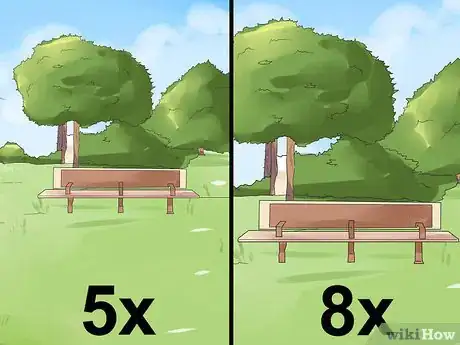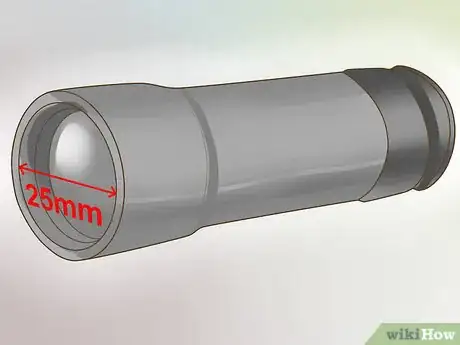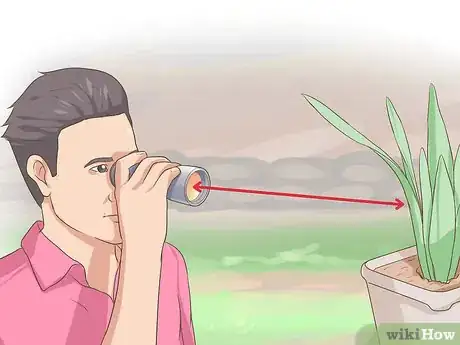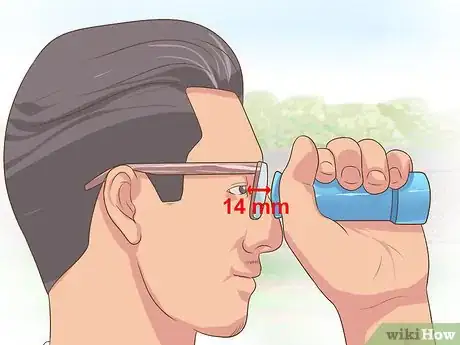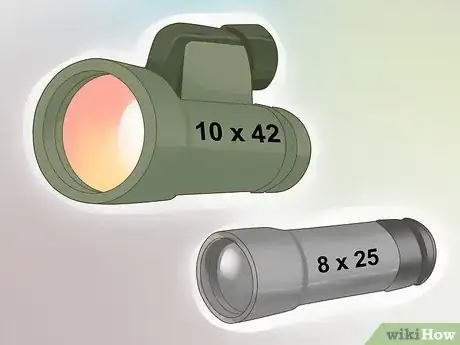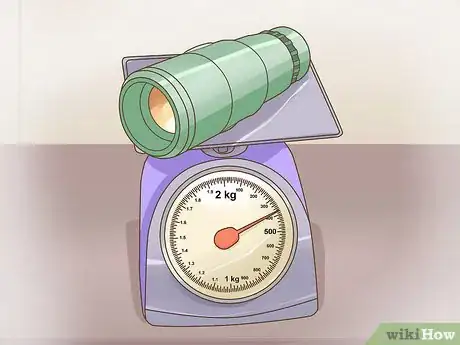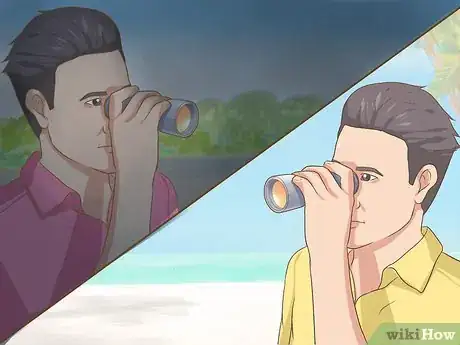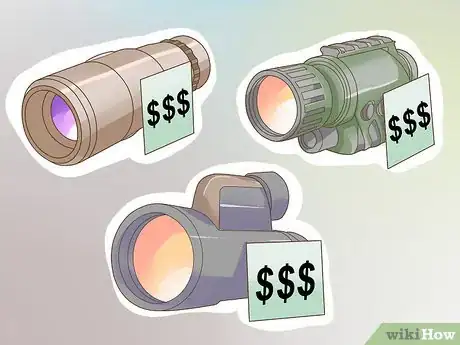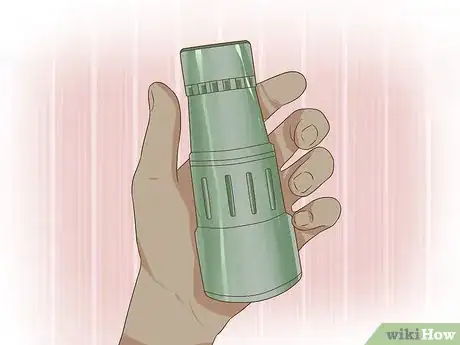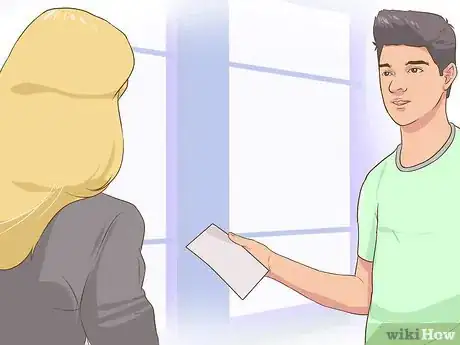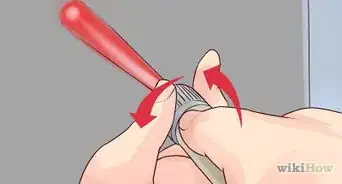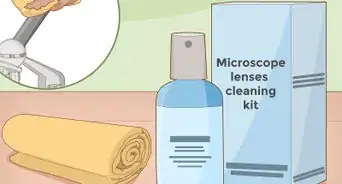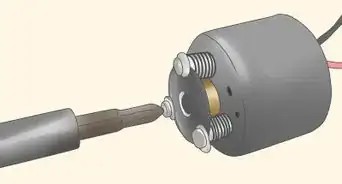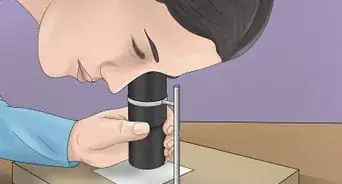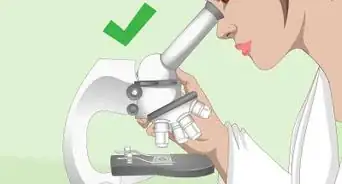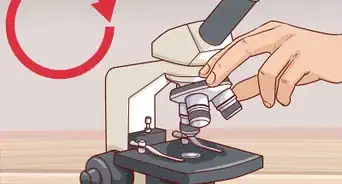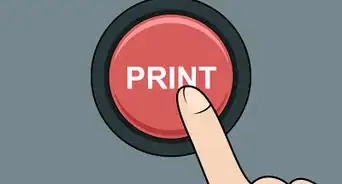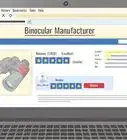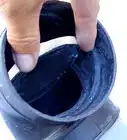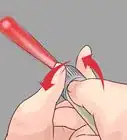This article was medically reviewed by Shaune Wallace, OD. Dr. Wallace is an Optometrist in Nevada with over 14 years of optometry experience. He received his OD from the Southern California College of Optometry in 2006 and is a member of the American Optometric Association.
wikiHow marks an article as reader-approved once it receives enough positive feedback. In this case, 94% of readers who voted found the article helpful, earning it our reader-approved status.
This article has been viewed 106,019 times.
A monocular is a small, low-powered telescope that you hold in your hand like a set of binoculars. Using one eye, you can see through a monocular and look at far away objects when you are hunting, camping, or watching sporting events.[1] You can also use a monocular as a magnifier to hold over text that is hard to read. You can select a monocular by looking at the magnification power as well as the size and weight of the monocular. You should also shop around for the monocular and try a few options so you can find one that is high-quality and within your budget.
Steps
Looking at the Magnification Power and the Lens
-
1Decide how much magnification power you need. The magnification power of the monocular will affect how far and how detailed you can see something. Monoculars with higher magnification power will let you see further and in more detail. Most monoculars have a magnification power of 5x to 8x.
- Though higher magnification can seem like a better option, it will be harder to use the instrument at higher magnifications, as small movements make the image jump more at higher magnifications. If you are looking for an easy to use monocular with decent magnification, you may opt for a 5x, 6x or 8x one.[2]
- If you want monoculars with higher magnification power, you may go for a monocular with a 9x or a 10x magnification. You may opt for higher magnification power if you are experienced with using binoculars, spotting scopes, and monoculars.
- Keep in mind that as the magnification power gets higher, your field of view goes down. So you may opt for a monocular with lower magnification power if you want a wide field of view.
-
2Determine the lens size. You should also consider your ideal lens size, as a bigger lens will allow you to see a wider view and get a better, brighter image. A smaller lens may not have as good of a view, but they are easier to use and less bulky. Most monoculars will have a lens size of between 20mm to 42mm.[3]
- You may find that monoculars come with a specific magnification power and lens size, such as an 8 x 25, which is a monocular with an 8x magnification and a 25mm lens. You may try out several different monoculars with a set magnification power and lens size to get a sense of what you are looking for.
Advertisement -
3Check if the lens has a coating. Most monoculars have a lens that has an anti-glare coating on it. The coating on the lens can affect the image brightness and enhance or obscure your view through the monocular.[4]
- There is a range of anti-glare coverage, from just the external elements to all the lenses fully coated. The best (and most expensive) option is "fully multi-coated," which means all sides of all the lenses have multiple layers of anti-glare coatings, so your view is not obscured.
- Other options are coated (the lowest quality, should be used only in non-direct light); fully coated (lenses are coated with a single material and may still be affected by glare and sunlight); and multi-coated (lenses are layered with multiple anti-glare coats, though the coating is not of the same quality as fully multi-coated lenses).[5]
-
4Test out the close focus on the monocular. You should also look at the close focus capabilities on the monocular. The close focus is the distance at which the monocular will focus on an object. Close focus may be measured in inches, rather than yards.[6]
- If you want to view objects in detail when they are a few feet away from you, you may opt for a monocular with a high close focus. A monocular with a high close focus will allow you to view objects at a distance in detail.
-
5Consider the eye relief distance on the monocular. Eye relief is the space between your eye and the eyepiece on the monocular. It is measured in millimeters and will affect how far you can see through the scope of the monocular. If you wear glasses, you will need an eye relief of at least 14mm.
- If you do not wear glasses, you may not need a large eye relief.
-
6Consider the prism. Monoculars use both lenses and prisms to refract light and make distant images appear magnified. Monoculars usually use a roof prism or Porro prism. The type of prism used will usually depend on the magnification level of the monocular.[7]
- If you are choosing a model with a higher magnification, the monocular will likely have a roof prism. This image will be more narrow and compact than one produced bt a Porro prism.
- A Porro prism is the most commonly used. Porro prisms will give the image more depth and produce a brighter image than roof prisms.
Finding the Ideal Size, Weight, and Type
-
1Determine if you want a small or a large monocular. You should consider your ideal size for the monocular. A smaller sized monocular will often fit in your pocket and can be a good portable device. A larger monocular may be bulkier and harder to carry, but it may also offer a sharper, brighter image.[8]
- An 8 x 25 or 10 x 25 monocular are considered pocket or compact models. You can slip a compact monocular in your bag, in your pocket, or keep it in your car.
- Larger monoculars that are 9 x 30 or 10 x 42 may require a larger carrying bag and are often set up on a tripod.
-
2Look at the weight of the monocular. Think about how often you are planning to use the monocular and in what ways. If you want a monocular that is lightweight and easy to carry with you on hikes or walks, you may opt for a smaller, lightweight model. If you do not mind a heavier monocular that you need to transport in a carrying bag, you may opt for a larger monocular model.[9]
- You may try several different sized monoculars to get a sense of their weight and girth. If you are planning to carry the monocular around with you often, you may not want to get a model that is too heavy or bulky.
-
3Consider if you will use the monocular in the dark or around water. If you are planning to use the monocular at night, you may opt for a model that has night vision. Night vision monoculars have a built-in illuminator that allows you to see through them at night. These models also have a lower magnification so the image is less fuzzy or obscured at night.[10]
- If you are planning to use the monocular around water, such as when you are boating or fishing, you may want a model that waterproof. Waterproof monoculars can be more expensive so you may not go for this feature unless you know you are going to use the device near water.
Shopping for a Monocular
-
1Compare monoculars by price. When you shop for a monocular, you should look online at several models and brands to compare their prices. Take into consideration what you are looking for in terms of magnification power, the lens, the size, and the weight of the monocular. Try to compare several retailers online as well so you can get the best price for the monocular model you want.
- You may also visit several retailers and compare prices that way. Talk to the salesperson about getting a price match or a reduced price on a monocular if you find the same model at a different retailer for a lower price.
-
2Try out the monocular before you buy it. You should go in person to several retailers and try the monoculars yourself before you buy one. Hold the monocular in your hand to feel its weight and size. Slip it in your pocket and see how comfortable it feels. Put the monocular to your eye to make sure the eye relief is a fit for you.
- You may try out several different models to get a sense of what will suit your needs. Do not be afraid to ask a salesperson to let you hold the monocular and try it out in the store. Notice the magnification power and the lens on the monocular. Make sure it is a good fit for you.
-
3Get a warranty for the monocular. Once you decide to buy a monocular, you should speak to the salesperson about getting a warranty for the product. In general, monoculars are often more expensive and may come with a warranty to ensure the product works well.
- Having a warranty for the monocular will make it easier for you to return it if there is an issue and give you some assurance that the manufacturer stands by their product.
References
- ↑ http://www.opticsplanet.com/howto/how-to-choose-the-right-monoculars.html
- ↑ http://www.opticsplanet.com/howto/how-to-choose-the-right-monoculars-monocular-magnification-and-objective-size.html
- ↑ https://procular.com.au/choose-monocular/
- ↑ http://www.opticsplanet.com/howto/how-to-choose-the-right-monoculars-field-of-view-eye-relief-lens-coating-and-more.html
- ↑ http://www.ebay.com/gds/Monocular-Buying-Guide-/10000000177329698/g.html
- ↑ http://www.opticsplanet.com/howto/how-to-choose-the-right-monoculars-field-of-view-eye-relief-lens-coating-and-more.html
- ↑ http://www.ebay.com/gds/Monocular-Buying-Guide-/10000000177329698/g.html
- ↑ https://procular.com.au/choose-monocular/
- ↑ https://procular.com.au/choose-monocular/
About This Article
The type of monocular you should get will depend on what you’ll be using it for. Most monoculars have a magnification between 5 and 10. 5-8 is great for normal use and will give you a wider field of view, but if you’ll be looking at things really far away, you’ll want to go for 9 or 10 times magnification. Most lenses have a size between 20 and 42 millimeters. A big lens will give you a wider, brighter view, but they’ll also be bulkier and are sometimes harder to operate. A good beginner monocular would be 8 times magnification with a 25 millimeter lens. You can also get a monocular with night vision if you want to use it in the dark. Monoculars are the kind of product you should try out in stores to make sure you find the right one. For more tips from our Optometry co-author, including how to choose a monocular you can wear glasses with, read on!
